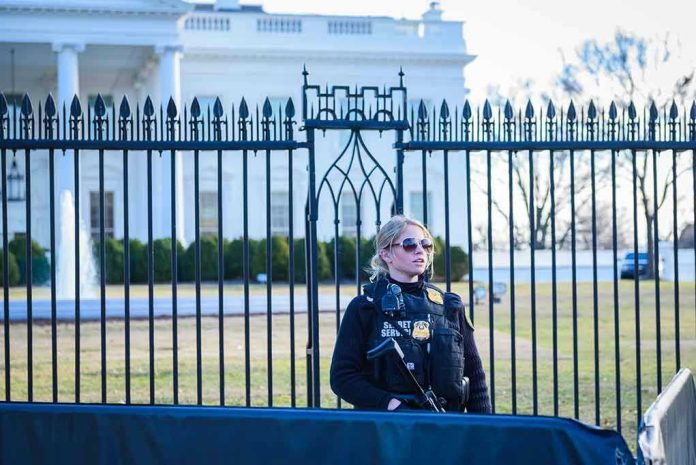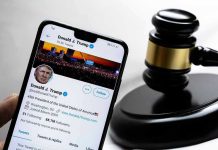
When a car slams into the White House barricade, the nation’s illusion of impenetrable security gets shattered in a single, jarring moment—what compels someone to test the world’s most protected threshold, and what does it reveal about the hidden cracks in America’s fortress?
Story Snapshot
- A vehicle crashed into a Secret Service checkpoint outside the White House on October 21, 2025, leading to the immediate arrest of the driver.
- No injuries reported, but the incident reignites concerns about White House security and public safety.
- The driver’s motive and identity remain undisclosed, fueling speculation and unease.
- This breach follows a string of similar incidents and comes amid heightened political tension and protests nationwide.
How a Nighttime Crash Shook the White House Perimeter
On an otherwise ordinary evening of October 21, 2025, the unthinkable happened: a car barreled into the secure perimeter of the White House, colliding with a Secret Service checkpoint and twisting steel into a new chapter of security anxiety. Within minutes, Secret Service agents detained the lone driver, whose silence and anonymity have since become the focal point of speculation. With no injuries and no immediate evidence of a broader threat, the public’s imagination filled the vacuum left by official reticence. Was this an act of protest, a cry for help, or something more sinister?
Media outlets pounced on the story as it broke the next morning, underscoring the vulnerability of even the most fortified landmarks. The White House, a symbol of national resolve, suddenly felt less invulnerable. The evening’s events unfolded against a backdrop of ongoing protests and social unrest in major U.S. cities, leaving investigators and citizens alike to wonder if America’s angry undercurrents had finally breached the gates of power. Yet, so far, officials have found no evidence linking the crash to the unrest outside.
Security Breaches and the Ever-Evolving Fortress
The White House has faced its share of security scares, with history offering a sobering parade of close calls: the 2014 fence-jumper who made it inside, the 2018 attempted vehicular assault, and now this. Each incident raises the stakes and prompts renewed scrutiny of security protocols. The Secret Service, guardians of the presidential residence, operate under constant pressure—one miscalculation could reverberate globally. Their rapid response this time neutralized the immediate threat, but every breach chips away at public confidence and demands a recalibration of defense strategies.
Security architecture at the White House is a living organism, evolving with every new threat. The latest crash reignites debates about how much access is too much, and whether public spaces can ever be truly secure. Layered defenses, reinforced barriers, and ever-watchful eyes can only do so much in a world where desperation, ideology, or mental instability can weaponize a common vehicle. National security experts argue that such incidents are not just about barricades and checkpoints—they are about reading the shifting winds of societal unrest and adapting accordingly.
The Human Element: Motive, Mystery, and the Search for Answers
The anonymity of the driver is both a shield and a provocation. Authorities have withheld the individual’s identity and background, citing an ongoing investigation and the absence of immediate evidence to suggest a wider conspiracy. This silence has only amplified public curiosity and unease. With the motive still unclear, theories abound: Was the driver acting out of political grievance, mental distress, or something else entirely? Law enforcement and mental health professionals must now sift through the driver’s history, searching for clues that could explain the night’s events and prevent future attempts.
For White House staff and residents, the incident is a reminder that vigilance must never wane. For the public, it is a window into the relentless tension between openness and security at America’s most visible seat of power. The investigation continues, with no timeline for answers and little comfort for those who crave certainty. Meanwhile, the Secret Service reviews protocols, the media speculates, and the barricade stands repaired—its scars both literal and symbolic.
Broader Implications: Security, Society, and the Politics of Fear
Short-term impacts are already visible: an increased security presence, tighter access controls, and a city briefly on edge. In the long run, the incident may serve as a catalyst for further fortification of the White House perimeter and more intrusive screening of vehicles and visitors. The costs—financial, social, and political—are not trivial. An incident like this can trigger debates about civil liberties, the right to protest, and the balance between public access and national security. For those in law enforcement and government, it is a case study in rapid response and the unpredictable nature of threats in a polarized age.
This crash will linger in the national memory, not for its damage, but for the questions it raises about the health of the body politic and the fragility of the symbols that hold it together. The barricade may be rebuilt, but the sense of invulnerability has been dented once more. Each breach, each unanswered question, is a reminder that in the heart of American power, the unexpected is always a heartbeat away.
Sources:
White house breach, man arrested









